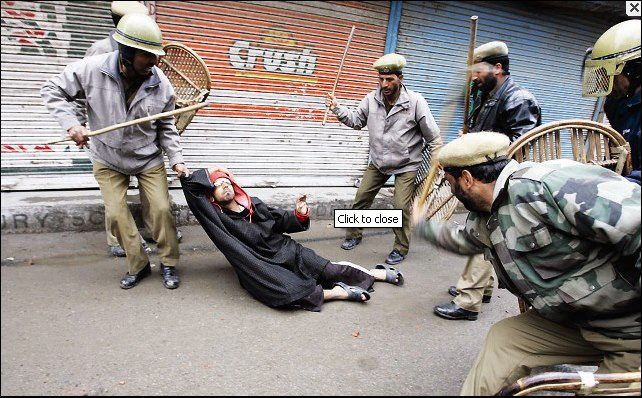The incident of 13th July 1931, in which twenty two people were martyred by the marauding troops of autocratic Dogra ruler, Hari Singh has to be seen in a proper perspective and context.
Soon after Hari Singh took over as Maharaja of State in 1925 and his style of functioning became clear to the most impoverished majority of Muslims , a campaign against his discriminatory rule started albeit in sotto voices. In 1927 he proclaimed State subject law with the twin objective of forbidding outsiders to purchase land in the State so that he is not overwhelmed by the influx of people from British India (This prompted the Britishers to stay in House-boats which gave a boost to their number and outreach towards Dal Lake ) and two to appease Kashmiri Pandiths by employing them in Govt Jobs in Maximum numbers. Muslims of the State continued to be discriminated in all spheres-be it education or employment. They were subjected to worst kind of repression & oppression. Extracting Begar (Forced labour without wages) from them was an official policy.
In 1929, Chowdhary Ghulam Abbas of Jammu, a law Graduate reorganized the Anjumani-Islam into Young Men’s Muslim Association of Jammu to work for the betterment of State Muslims. In Srinagar the Reading room Party, comprising of educated people from Valley rose to prominence. In 1931 Molvi Yusuf Shah succeeded his Uncle as Mirwaiz in Srinagar. He used his position in Mosque to organize a series of meetings which protested the Mahraja’s Government. And as the political turmoil was beginning , another rising political activist, Sheikh Mohd. Abdullah returned to the valley in 1930 and rose to prominence as the “Lion of Kashmir”.
Due to increasing discrimination & mounting injustices, people were furious & Kashmir was like the proverbial powder keg. And as Henry David Thoreau once said that “If the machine of government is of such a nature that it only churns injustice , then, I say, break the law”. This is precisely what Abdul Qadir, a non-kashmiri employee in the service of an English Army officer, did. And as they say-rest is history.
Immediately after the firing incident, the Government clamped Martial law and handed over the city to the Army. Brigadier Sutherland, Chief of Staff, hurried to Jamia Masjid and cordoned it off with hundreds of fixed bayoneted and heavily armed soldiers. Machine Guns were mounted at short intervals and aimed at the mosque. Col. Omkar Singh was placed in charge of the Machine Guns mounted on the main Gate. It was a horrible scene with wailing people & dead bodies inside the mosque premises without any medical aid to injured or relief arrangements from the administration. It was here that one of the martyrs who had not as yet breathed his last told Sheikh Abdullah -“I have done my duty- It is now yours to proceed ahead”. Another martyr in a similar condition enquired from Mirwaiz Mohammad Yusuf Shah as to whether he was dying as a martyr and on being assured by him to have acquired that status, closed his eyes and reciting the Kalima breathed his last.
The next big issue was the place of burial for the martyrs. While the Govt. insisted that they should be buried in their respective family graveyards, the people & the leaders were adamant to bury them at one place to serve as a reminder for posterity. It was the deft handling of the issue by Noor Shah Naqashbani that the administration finally yielded to the public demand of burying them at Naqasband Saheb Grave Yard.
The age profile of those martyred on that day reveals a startling analysis. Out of the total 22 martyred, 20 or 91% belonged to the age group of 18 – 35 years, the most reproductive age group and the remaining two i.e 9% were above 35 years. This pattern of killing, which has continued till this day is a grim reminder of the fact that while the killer might have changed, the target remain the same.









